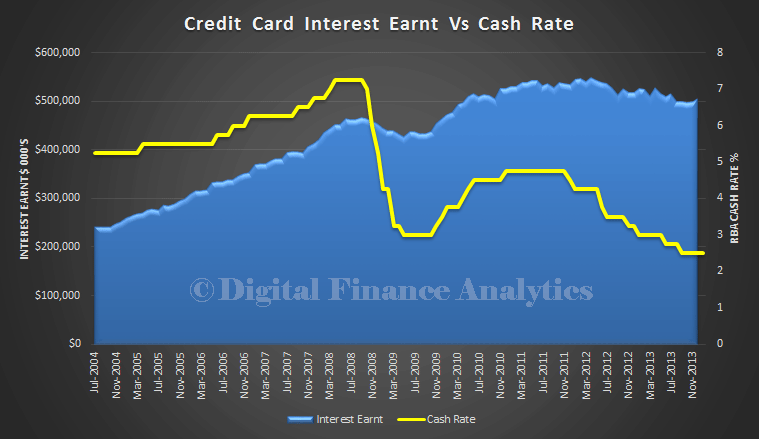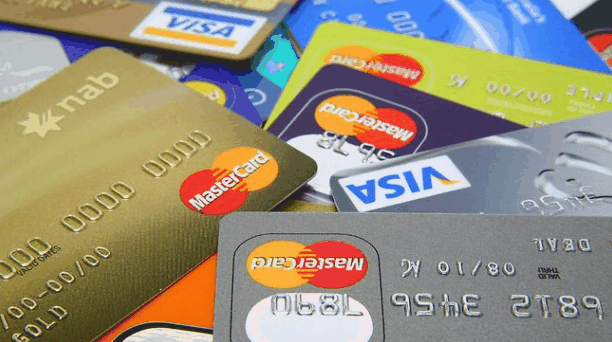
By Martin North, cross-posted from the Digital Finance Analytics Blog
Today we begin to look at the economics of credit cards. We start by looking at interest rates charged on cards. Whilst many households pay off the entire balance each month, those who revolve balances on the card are being hit with relatively high rates. Using the RBA data, we can plot the trends over time.
We find that the margin between the RBA cash rate, and the average standard rate and low rate cards have widened. In fact since cash rates started falling in 2012, average credit card rates have hardly moved down at all. The average rate on a standard card is 19.6%, and on a low rate card it is 13.05%. Many players are offing a zero balance transfer deal, but then the card reverts to standard rates. The RBA cash rate is 2.5%.
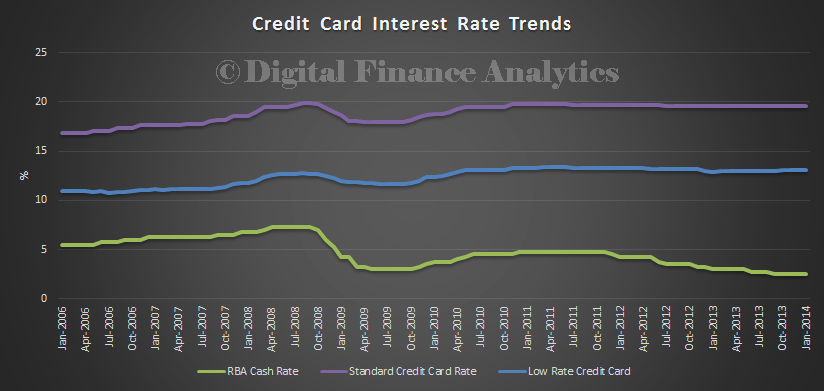 The RBA provides us with quite detailed data on transaction patterns. The number of cards, and transactions has been growing. There were a total of 15,537,723 accounts open in December 2013. Some accounts will have more than one card issued on it, so the number of credit cards in use are likely to be higher. Cash advances excepted, there were 191,829,963 transactions in December, worth $24,817 million.
The RBA provides us with quite detailed data on transaction patterns. The number of cards, and transactions has been growing. There were a total of 15,537,723 accounts open in December 2013. Some accounts will have more than one card issued on it, so the number of credit cards in use are likely to be higher. Cash advances excepted, there were 191,829,963 transactions in December, worth $24,817 million. 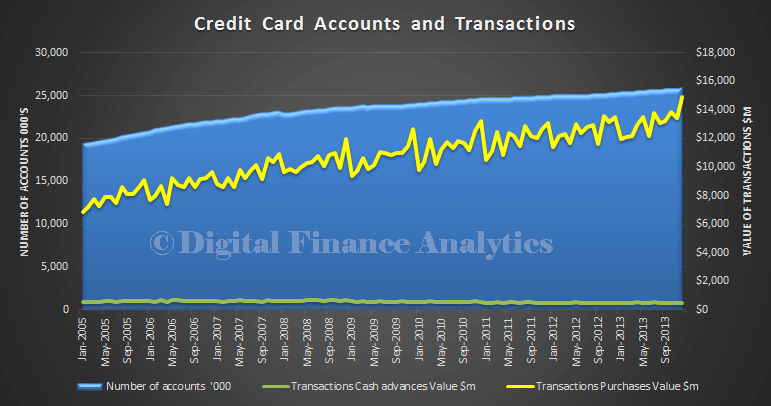 Interestingly, the average transaction size has shrunk in recent times.
Interestingly, the average transaction size has shrunk in recent times.
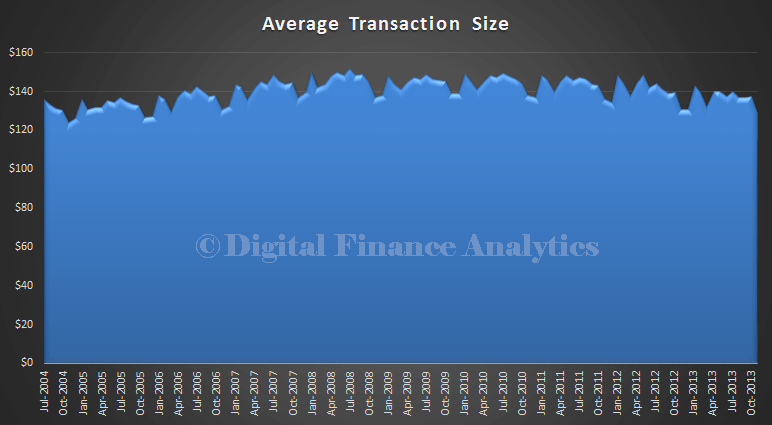 So if we plot the balances earning interest against the interest earnt, we see that the gross amounts are pretty high, despite a fall in balances accruing interest.
So if we plot the balances earning interest against the interest earnt, we see that the gross amounts are pretty high, despite a fall in balances accruing interest.
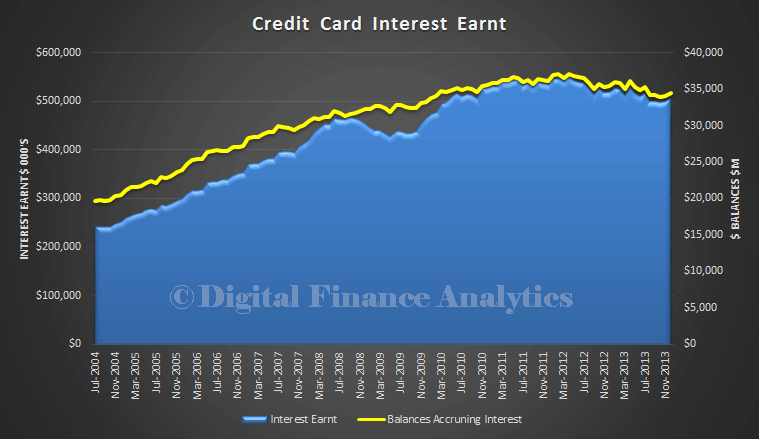 Here is the interest earnt mapped to the cash rate:
Here is the interest earnt mapped to the cash rate:
Another way to look at the situation is the net weighted margin:
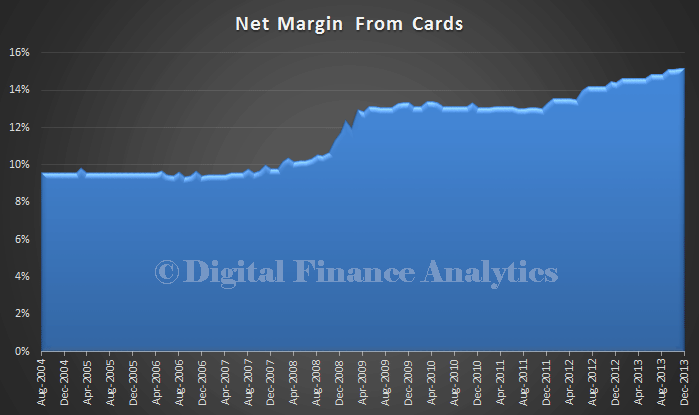 This shows that banks have been enjoying a significant increase in margins, especially as the RBA cash rates have fallen.
This shows that banks have been enjoying a significant increase in margins, especially as the RBA cash rates have fallen.
Finally, fees on cards have also risen (last year of data is 2012 from the RBA), so the argument that there has been a relative re-balancing between fees and rates won’t wash.
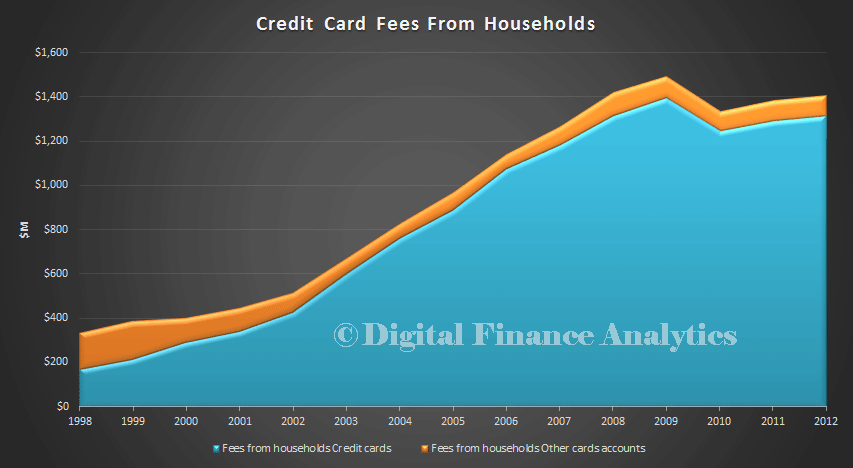 So why are rates as high as they are? I think that banks are taking the opportunity to bolster their margins, and offset some of the losses in the cards portfolio. Later we will look further at write-offs, loyalty schemes, merchant service fees and surcharges to see if that changes the picture. We will also introduce some of our household research which shows how consumers are shopping around, managing their debt, and who is paying the interest. For a sneak preview, you can read our post from last year on Households and Their Credit Cards. But bottom line is, card rates are too high!
So why are rates as high as they are? I think that banks are taking the opportunity to bolster their margins, and offset some of the losses in the cards portfolio. Later we will look further at write-offs, loyalty schemes, merchant service fees and surcharges to see if that changes the picture. We will also introduce some of our household research which shows how consumers are shopping around, managing their debt, and who is paying the interest. For a sneak preview, you can read our post from last year on Households and Their Credit Cards. But bottom line is, card rates are too high!

